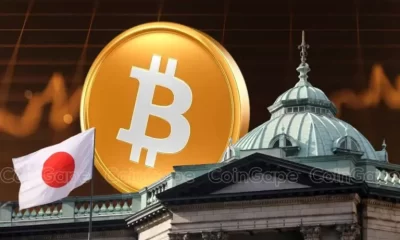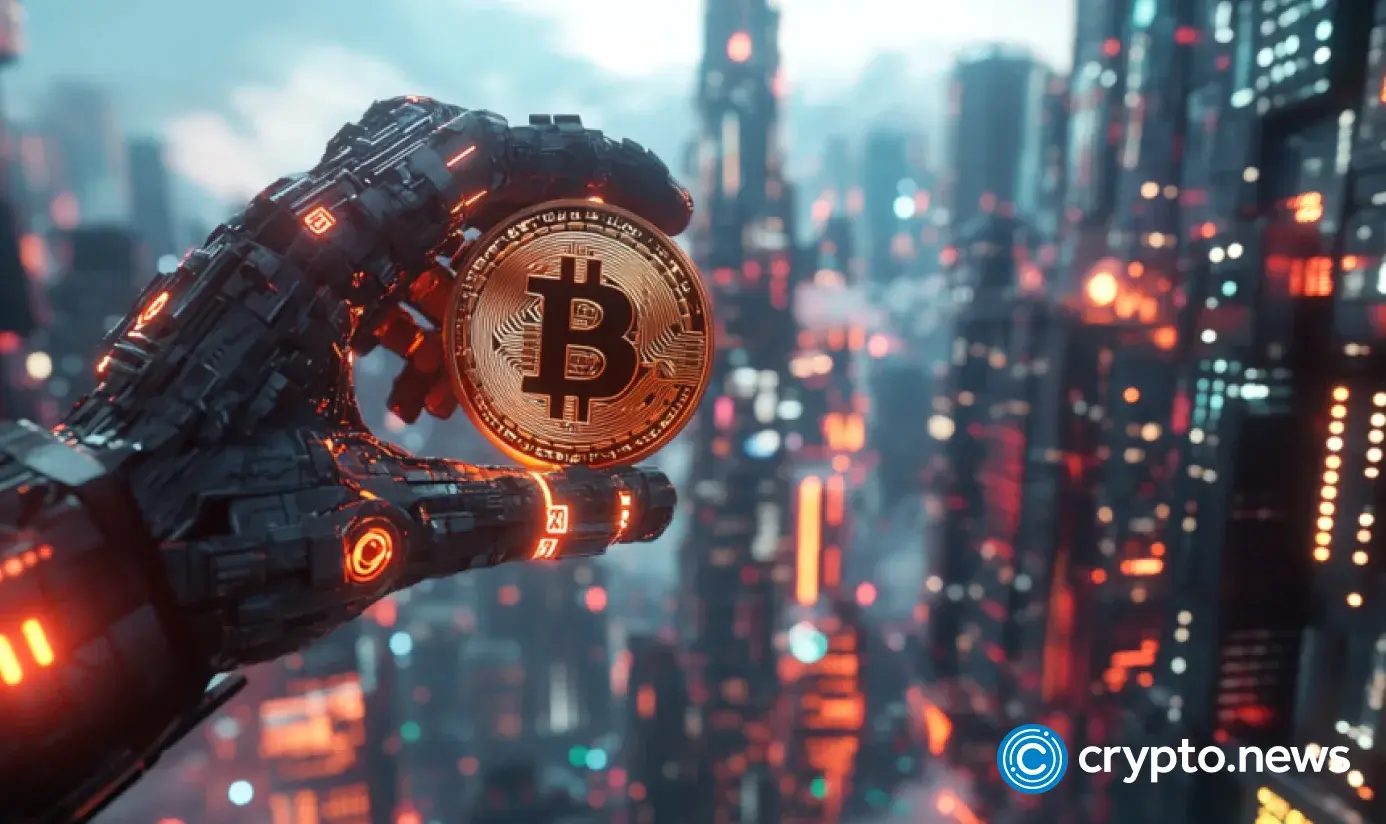Opinion
Political Endorsements Are Driving Rug Pulls
Published
3 days agoon
By
admin
The synergy of political endorsement and highly speculative assets like meme coins was always bound to be disastrous, and the recent LIBRA scandal was a clear reflection of this concern.
Crypto has come a long way over the past decade. Mainstream adoption, institutional interest, and regulatory clarity helped the industry gain increasing credibility. And meme coins also carved out an exciting niche in this sector, which reflected creativity and community engagement. Yet, political meme coins could ruin this decades-worth of progress very quickly.
A promotional post from Argentina’s president, Javier Milei, caused LIBRA investors to lose over $250 million in just hours. His endorsement sparked a buying frenzy that pushed the price from near zero to almost $5 in a matter of minutes. Insiders quickly cashed out, dumping over $107 million in tokens before the price collapsed. Argentina’s fintech chamber labeled this classic rug pull without mincing words.
The Anatomy of a Meme Coin Scam
Unfortunately, the LIBRA scandal was not an exceptional case. Bubblemap analysts traced LIBRA’s origins back to the team behind the MELANIA token and other pump-and-dump schemes. The same group launched several coins that swelled in price before crashing.
President Milei, a self-proclaimed libertarian and Bitcoin enthusiast, used his platform to share information about LIBRA. His tweet ignited a rush among investors eager to capitalize on his reputation.
It’s still staggering that influential figures have yet to understand the true impact of their statements on an industry largely driven by speculative interest. As the token’s value soared, insiders began unloading their tokens. Within hours, the coin’s market cap fell from $4.5 billion to just a fraction of that amount.
However, on-chain analysis shows that LIBRA was fundamentally designed to potentially scam investors. The founders held 70% of the token supply, which allowed them to profit massively while leaving retail investors vulnerable. When insiders cashed out, many traders lost nearly everything they had invested.
Such pump-and-dump schemes always follow the same playbook: a high-profile personality sparks investor interest, insiders pocket their profits, and the token collapses. This pattern played out with LIBRA in a textbook fashion.
Political Endorsements and Market Manipulation
Political endorsements used in these schemes add a disturbing twist to the story. Milei’s tweet did more than spread a message; it lent credibility to a high-risk asset. When a sitting president supports a project, many assume there is underlying merit. This assumption helped drive the buying frenzy around LIBRA. Similar episodes occurred in the United States with the TRUMP and MELANIA tokens. Politically-linked meme coins have morphed from mere speculative plays into tools for financial manipulation.
Galaxy Research Analyst Alex Thorn describes LIBRA as the latest example of a series of Solana-based meme coin implosions. During this crash, Solana’s transaction volumes plummeted to mid-2024 levels, and there is growing concern over a $1.5 billion FTX token unlock. These factors combine to put additional pressure on Solana’s price.
Meme coins, which dominated headlines in 2024, now face harsh market realities in 2025. Many of these tokens have already lost 30-60% of their value. Activity on platforms such as Pump.fun has cratered, and overall trading volume in the sector is in freefall.
The trend of politically-endorsed tokens creates an environment where hype easily overrides fundamentals. Political figures lend their names to projects with little oversight. This practice allows groups of insiders to generate large profits at the expense of everyday investors.
The situation exposes a troubling trend in crypto markets. When prominent figures use their influence to spark buying frenzies, they turn volatile tokens into weapons for financial manipulation. Such practices risk undermining trust in the entire crypto ecosystem.
A Much-Needed End to the Chaotic Meme Coin Cycle?
The $LIBRA debacle should serve as a harsh lesson for retail investors. Many of those who lost money had a high level of technical knowledge, as they needed Solana wallets and SOL tokens to participate.
However, the overall appeal of politically charged tokens often attracts investors who believe that an endorsement from a political heavyweight guarantees success. Reality proved otherwise. When high-profile insiders exploit their inside knowledge to exit early, the outcome is disastrous for retail participants.
As institutional investors shift their focus to more stable markets like Bitcoin and Ethereum ETFs, the appetite for meme coins might be waning. Political meme coins remain the lawless frontier of crypto. Their volatile nature and inherent manipulation make them a poor choice for risk-averse investors. The recent fallout suggests that market excitement has finally run far ahead of sound fundamentals.
Political meme coins represent a clear symptom of a larger problem. They expose vulnerabilities in a market that still lacks a solid regulatory framework. When the excitement around a meme coin overshadows careful analysis, the consequences can be severe. Investors may see short-term gains, but the inevitable collapse brings long-term damage. The case of $LIBRA proves that political endorsements do not safeguard against market manipulation.
Source link
You may like


EU Regulator Pushes for New Capital Rules for European Insurers Holding Crypto Assets


Japan Set To Classify Cryptocurrencies As Financial Products, Here’s All


This Week in Crypto Games: ‘Off the Grid’ Token, GameStop Goes Bitcoin, SEC Clears Immutable


Binance debuts centralized exchange to decentralized exchange trades


Why Is the Crypto Market Down Today? Bitcoin Drops to $82K as Traders Flee Risk Assets Amid Macro Worries


BTCFi: From passive asset to financial powerhouse?
Bitcoin
BTCFi: From passive asset to financial powerhouse?
Published
4 hours agoon
March 30, 2025By
admin
Disclosure: The views and opinions expressed here belong solely to the author and do not represent the views and opinions of crypto.news’ editorial.
Bitcoin (BTC) has always been the face of crypto, the first thing that comes to mind when you think of this market. But for years, its role has been largely static—held as a store of value, yet rarely used for anything else. Then BTCFi entered the scene: unlike traditional DeFi, which has been dominated by Ethereum (ETH) and other smart contract platforms, BTCFi is built around Bitcoin as the core asset.
In the last quarter of 2024, BTCFi’s total value saw a massive surge—from $800 million all the way to $6.5 billion. The momentum is impressive, to say the least. More institutional players are taking notice, and analysts predict that by 2030, roughly 2.3% of Bitcoin’s circulating supply (about $47 billion) could be actively used in decentralized finance.
So clearly, BTCFi is not just a passing trend. But why is it gaining so much traction? Can it really be called the future of Bitcoin’s utility as a financial asset?
Let’s try to figure it out.
What is BTCFi, and why is it growing now?
BTCFi represents the intersection of Bitcoin and decentralized finance, with the first crypto playing the role of the core asset in this case. Typically, DeFi platforms have been built on blockchains like Ethereum, while Bitcoin holders had to wrap their BTC into ERC-20 tokens (like wBTC) to participate in this field.
This kind of tokenization started picking up the pace around 2020, allowing BTC holders to access DeFi services that are typically not available on the Bitcoin blockchain. These “wrapped” tokens are built in a way that makes them compatible with other blockchain networks. And so, they effectively extended Bitcoin’s functionality.
However, advancements in Bitcoin L2 solutions and LRTs, or layered rollup technologies, are now changing the rules. It is becoming unnecessary for Bitcoin to use “second class citizen” ERC-20 tokens anymore.
BTC LRTs, for example, operate on Ethereum and other chains as well, but use Bitcoin as the primary collateral in transactions. This means unlocking the use of Bitcoin as a yield-generating asset in other networks beyond its native chain.
The emerging Bitcoin L2s, meanwhile, are tackling this blockchain’s long-standing scalability issues, allowing for faster and more cost-efficient transactions. These innovations are going to fundamentally redefine Bitcoin, turning it from a passive store of value to an actively utilized financial asset.
Why is BTCFi the gateway for Bitcoin whales in 2025?
Large Bitcoin holders—miners, in particular—have often used CeFi loans backed by their BTCs to fund their operations since they didn’t want to outright sell those assets. This practice is still going on today, but BTCFi promises to make some changes. And that’s where everything will start from, really: by BTCFi enabling new opportunities for Bitcoin holders to put their assets to work.
Soon enough, Bitcoin whales will start looking at BTCFi as a powerful gateway that can be used to enter the DeFi space. And the way I see it, there are two key factors in 2025 that will influence that perception.
The first is the rise of Bitcoin ETFs. BTC ETFs currently account for almost 6% of all Bitcoin supply, having crossed $100 billion in holdings at the beginning of 2025. With them gaining mainstream traction, Bitcoin is increasingly perceived as the safest and most stable cryptocurrency asset.
This makes it a prime choice for DeFi, attracting large-scale holders who want to use their BTC without selling. Earlier in February this year, Goldman Sachs announced that it had invested $1.63 billion in Bitcoin ETFs. That’s easy proof right there.
The second major factor is the appearance of BTC L2 technologies, which we’ve already covered earlier. Until recently, the lack of scalability and transaction efficiency held Bitcoin back from DeFi adoption. Now, we are going to see a surge of L2 solutions that will enhance the network’s performance. And here’s the important part: they will do so while preserving Bitcoin’s core principles of decentralization and simplicity (and, hence, its robustness).
What DeFi platforms need to do for proper BTCFi integration
There are several challenges that will need to be overcome before BTCFi can achieve truly seamless integration. The biggest technical issue will be ensuring that Bitcoin-based L2 solutions become genuinely trustless. At the present time, they are not quite there, often relying on intermediaries and centralized elements, which goes against Bitcoin’s core philosophy.
The good news is that there’s a lot of R&D going on to make it happen. If successful, it could make the vast amounts of BTCs that are currently just lying there “collecting dust” be useful in DeFi.
Another big challenge is going to stem from people’s trust. Among Bitcoin holders, there are many who do not quite trust Ethereum and the existing Bitcoin tokenization methods. The key to winning them over will lie in creating robust and cost-effective solutions on the native Bitcoin network. Having a fully trustless and inexpensive execution layer on the BTC blockchain could really become the dealbreaker for these people.
The future of Bitcoin: More than just ‘digital gold’
For years, Bitcoin has been carrying the moniker of “digital gold”—a safe-haven asset meant for holding rather than using. These days, this is becoming increasingly untrue. As more institutional players enter the crypto space, the potential for BTCFi to become Bitcoin’s next-level evolution is very real.
The demand is on the rise, and the infrastructure is already being built. For Bitcoin whales looking to maximize their assets without selling, BTCFi could become the perfect answer.
Disclosure: This article does not represent investment advice. The content and materials featured on this page are for educational purposes only.

Michael Egorov
Michael Egorov is a physicist, entrepreneur, and crypto maximalist who stood at the origins of DeFi creation. He is a founder of Curve Finance, a decentralized exchange designed for efficient and low-slippage trading of stablecoins. Since the inception of Curve Finance in 2020, Michael has developed all his solutions and products independently. His extensive scientific experience in physics, software engineering, and cryptography aids him in product creation. Today, Curve Finance is one of the top three DeFi exchanges regarding the total volume of funds locked in smart contracts.
Source link
Bitcoin
Why Trump’s ‘Liberation Day’ tariffs may hurt crypto’s global future
Published
2 days agoon
March 29, 2025By
admin

Donald Trump’s upcoming “Liberation Day” tariff announcement is being framed by some experts as a reset of global trade and could have negative implications for crypto.
While much of the attention is focused on the political fallout and trade disruptions, the broader consequences for digital assets, and the global frameworks that support them, deserve a closer look.
Heidi Crebo-Rediker, senior fellow at the Council on Foreign Relations, recently described on Bloomberg TV U.S. President Donald Trump’s plans as a “tearing up” of existing free trade agreements with America’s closest allies. This includes the so-called “Dirty 15”, a group of major trading partners that together make up 80% of U.S. trade.
Trump’s proposed system, built on unilateral tariffs and non-tariff barriers, represents a complete shift away from the cooperative global order that has defined the last several decades of international trade.
Why does this matter for crypto?
Crypto is inherently cross-border. Its infrastructure, users, capital flows, and regulatory frameworks depend on global alignment and relatively open markets. Any shift toward economic fragmentation risks disrupting that progress.
Crebo-Rediker notes that countries like Canada are already preparing to diversify away from the U.S., bracing for a reconfiguration of trade and investment relationships. In this new era, markets could become more closed, regulation more inconsistent, and capital controls more common.
She may agree (I don’t know), but these are all hostile conditions for crypto adoption. She also warns of a broader retreat from the multilateral frameworks that underpin both global finance and regulatory cooperation.
If America turns inward while allies look elsewhere, especially towards China, which is positioning itself as a defender of the global system – it could weaken the West’s influence over digital asset standards.
Crypto advocates have cheered Trump’s recent embrace of stablecoins and digital finance, but they should be cautious. A fragmented world, with each country pulling in a different direction on trade and tech, is not a world where crypto can thrive.
Forget about Michael Saylor’s vision of Bitcoin surpassing a $200 trillion market cap and we can only hope it can hold on to a $1 trillion valuation.
If global coordination erodes, so too might the prospects for crypto’s next wave of adoption. If so, it was a fun run. If not, I’ll be glad to admit being wrong.
Source link


Right now, my X feed is full of people who are giving up on Web3 gaming. I get it. Over $12 billion of venture capital funding has gone into it since 2020 and they haven’t seen the sort of breakout success that many expected. Even the best games haven’t reached anything close to mainstream scale. Token prices are down. Studios are shutting down. And everyone is exhausted.
But measuring Web3 gaming by token prices alone is like calling the internet a failure because of the dot-com crash — it ignores how far the technology has come and where it’s headed. It’s missing the real story.
At its core, Web3 gaming is about giving players real ownership — not just of the in-game items that they buy and earn, but also their identities and achievements. In traditional games, players invest time, effort and money into digital assets that ultimately belong to the publisher. Web3 changes that. By putting assets on-chain, players can truly own what they earn—whether that’s tradable items like weapons or land, or non-transferable badges of reputation, guild history, or verifiable skill. It’s not just about buying and selling stuff — it’s about agency, persistence, and getting proper recognition for what you’ve built and what is really yours in the ecosystem.
The concept isn’t new. Players have wanted more control over their in-game assets for years. Look at the massive markets for CS:GO skins or World of Warcraft gold. But until now, those economies have been fragmented, restricted, or at risk of being shut down if a centralized publisher decides to shut it down or change the rules. Web3 makes these economies open, interoperable, player-owned and player-driven.
Ownership has always been the foundation of Web3 gaming, and play-to-earn was an experimental model that showed the potential for open and permissionless virtual economies on blockchain. Now, the industry is evolving with a stronger focus on sustainable economies and better tokenomics, deeper gameplay, and long-term player engagement.
But if you’re comparing Web3 gaming to Web2 gaming, you’ll be disappointed. Traditional gaming has had decades to fine-tune game design, build massive player bases, and develop business models that work, while Web3 gaming is still in its experimental phase. Sure, billions of dollars of investment can speed things up, but throwing money at a brand new category doesn’t magically buy it a track record or instantly create new games that people love.
I’ve been making games for over 20 years and I have seen every major shift get dismissed before it took over. Nobody believed mobile gaming could compete with PCs or consoles until it became bigger than both. Free-to-play was called a scam until it made more money and reached more players than ever before. Esports was a joke until stadiums sold out and prize pools hit millions. Digital skins were “worthless” before they became a multi-billion dollar market.
And now, Web3 gaming is at that same inflection point.
When I first heard about blockchain in 2018, everyone I knew in FinTech was talking about it. So of course I thought it was boring and I ignored it. It wasn’t until I learned about CryptoKitties that I actually took notice. When I saw people collecting, trading and actually owning these cute on-chain cats, that’s when I got excited because I knew they weren’t like other in-game assets. CryptoKitties were digital things that no one could take away from you. As someone who’s spent their life grinding in games, and their career convincing others to grind the same — without really getting anything for it — that idea of digital ownership gave me a whole new way to think.
So I went all-in on blockchain games. But 2018 and 2019 were really tough times. Pretty much no one else cared back then. There was no support, no real funding, no clear idea of what these games could be beyond speculation, and (outside of a handful of believers) there was very little conviction. The market was in a deep bear cycle, and many teams either gave up or ran out of money before they could launch. Still, some of us kept building. We stayed lean, experimented, and learned everything the hard way. It feels similarly bad now, but not as bad as it was then. Looking back, I’m so glad we didn’t pack it in when success was just around the corner.
When Axie Infinity broke through in 2021, everything changed. Web3 founders like Jeffrey “Jihoz” Zirlin of Sky Mavis, Yat Siu of Animoca Brands, Sebastien Borget of The Sandbox, and me, went from being called crazy to visionary overnight. Suddenly, we were speaking on the main stage at conferences where we used to watch in the audience. We made news headlines and “Most Influential” lists. Investors who ignored our emails were asking how much they could put in. My email inbox filled up with fundraising decks pitching the next YGG.
Then in 2022, the market crashed, and just as quickly, we went back to being crazy. But that never really bothered me because crazy people are the ones who make big things happen.
Now, everyone’s asking: When is the next big Web3 game? The answer is this: good games take time. And if you look past the red candles to take notice of what exists already today, you’ll see we how much progress we’ve made since our industry was seeded in 2018:
- In 2020, Axie Infinity had fewer than 500 daily players. Today, Ronin — the blockchain it built — has millions of active users, with 17 new games launched, and 134% growth in NFT trading volume in 2024 compared to 2023. It’s also gone permissionless, which means there will be more games, faster development, stronger network effects, and unpredictably big breakthroughs. Some of the biggest innovations in gaming like modding, free-to-play and esports came from unexpected places. By lowering the barrier to entry, a permissionless Ronin invites the kind of experimentation that could lead to the next Axie-scale success.
- Pixels, a farming game on Ronin, hit a peak of 1.3 million daily active users (DAUs) and is holding strong now with around 250,000 DAUs even with its token down 96%. Players are spending more than they cash out, buying land, upgrading assets, and actually putting money back into the game, fueling the economy instead of extracting from it. This is how virtual economies should work, with real demand and strong retention. Most importantly, it is an indication that the play-to-earn model can work if done right.
- Parallel, a trading card game (TCG) on Ethereum, just hosted a world championship in Las Vegas at the HyperX Arena — a venue that has hosted some of the biggest esports competitions from “League of Legends All-Stars” to “Street Fighter V’s Capcom Cup.” This was a prestigious event that saw some of the world’s best TCG players crossover from traditional titles like Hearthstone to become some of the first Web3 esports legends.
These are just a few examples, but they show the kind of traction we’re seeing: better infrastructure, growing communities, more sustainable virtual economies, digital ownership.
Those who FUD Web3 gaming today don’t understand it. They missed CryptoKitties in 2018, Axie in 2020, YGG in 2021, and they’ll miss the next wave too because they’re measuring the wrong metrics. Web3 is growing and innovating faster than any other sector in gaming. It’s not time to quit. It’s time to double down. Let them call us whatever they want: crazy, delusional. Visionary, pioneering. It doesn’t change what we do. We’ve been here before. Stay the path.
Source link

EU Regulator Pushes for New Capital Rules for European Insurers Holding Crypto Assets

Japan Set To Classify Cryptocurrencies As Financial Products, Here’s All

This Week in Crypto Games: ‘Off the Grid’ Token, GameStop Goes Bitcoin, SEC Clears Immutable

Binance debuts centralized exchange to decentralized exchange trades

Why Is the Crypto Market Down Today? Bitcoin Drops to $82K as Traders Flee Risk Assets Amid Macro Worries

BTCFi: From passive asset to financial powerhouse?

Hyperliquid Delists $JELLY, Potentially Causing $900K in Losses. Here’s Why Best Wallet Token Can 100x

Cryptocurrencies to Sell Fast if Bitcoin Price Plunges Below $80K

‘Extremely High’ Odds of V-Shaped Recovery for Stock Market, According to Fundstrat’s Tom Lee

Is XRP price around $2 an opportunity or the bull market’s end? Analysts weigh in

What is Dogwifhat (WIF)? The Solana Dog Meme Coin With a Hat

Ethereum’s time is ‘meow?’ Vitalik Buterin video go ‘vrial’

Bitcoin Miner MARA Starts Massive $2B At-the-Market Stock Sale Plan to Buy More BTC

Paul Atkins “Conflict of Interest” Triggers $220M Withdrawals from Ripple Markets

Bitcoin CME Gap Close About To Happen With Push Toward $83k

Arthur Hayes, Murad’s Prediction For Meme Coins, AI & DeFi Coins For 2025

Expert Sees Bitcoin Dipping To $50K While Bullish Signs Persist

Aptos Leverages Chainlink To Enhance Scalability and Data Access

Bitcoin Could Rally to $80,000 on the Eve of US Elections

Sonic Now ‘Golden Standard’ of Layer-2s After Scaling Transactions to 16,000+ per Second, Says Andre Cronje

Institutional Investors Go All In on Crypto as 57% Plan to Boost Allocations as Bull Run Heats Up, Sygnum Survey Reveals

Crypto’s Big Trump Gamble Is Risky

Ripple-SEC Case Ends, But These 3 Rivals Could Jump 500x

Has The Bitcoin Price Already Peaked?

A16z-backed Espresso announces mainnet launch of core product

Xmas Altcoin Rally Insights by BNM Agent I

Blockchain groups challenge new broker reporting rule

The Future of Bitcoin: Scaling, Institutional Adoption, and Strategic Reserves with Rich Rines

Trump’s Coin Is About As Revolutionary As OneCoin

Is $200,000 a Realistic Bitcoin Price Target for This Cycle?
Trending

 24/7 Cryptocurrency News5 months ago
24/7 Cryptocurrency News5 months agoArthur Hayes, Murad’s Prediction For Meme Coins, AI & DeFi Coins For 2025

 Bitcoin2 months ago
Bitcoin2 months agoExpert Sees Bitcoin Dipping To $50K While Bullish Signs Persist

 24/7 Cryptocurrency News3 months ago
24/7 Cryptocurrency News3 months agoAptos Leverages Chainlink To Enhance Scalability and Data Access

 Bitcoin5 months ago
Bitcoin5 months agoBitcoin Could Rally to $80,000 on the Eve of US Elections

 Altcoins2 months ago
Altcoins2 months agoSonic Now ‘Golden Standard’ of Layer-2s After Scaling Transactions to 16,000+ per Second, Says Andre Cronje

 Bitcoin5 months ago
Bitcoin5 months agoInstitutional Investors Go All In on Crypto as 57% Plan to Boost Allocations as Bull Run Heats Up, Sygnum Survey Reveals

 Opinion5 months ago
Opinion5 months agoCrypto’s Big Trump Gamble Is Risky

 Price analysis5 months ago
Price analysis5 months agoRipple-SEC Case Ends, But These 3 Rivals Could Jump 500x


